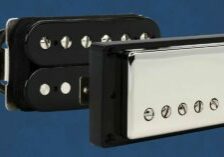When it comes to guitar amplifiers, the two most popular types are solid-state and tube amps. Both have their unique characteristics, pros, and cons. I’ve played through, owned and currently own a variety of both solid-state and tube amps, I can confidently say that each has their place.
Solid-state amps are known for being reliable, lightweight, and affordable. But mostly, it is easier to control volume. They use transistors to amplify the guitar signal, which makes them more resistant to wear and tear. They also tend to have more headroom, which means they can stay clean at higher volumes. However, some guitarists find that solid-state amps lack the warmth and character that tube amps are known for.
On the other hand, tube amps are revered for their rich, warm, and dynamic tone. They use vacuum tubes to amplify the guitar signal, which gives them a unique sound that cannot be replicated by solid-state amps. However, tube amps are more expensive, heavier, and require more maintenance. They also tend to break up at lower volumes, which can be a problem for some guitarists who need a clean tone at high volumes.
Overview of Solid State Amps
Lets go over the positives and negatives.
Advantages of Solid State Amps
Solid state amps are known for their reliability and durability. They are less likely to break down or require almost no maintenance compared to tube amps. Tubes need replaced. And tube amps generally have issues more often than solid state amps.
Another advantage of solid state amps is their affordability. They are generally less expensive than tube amps, making them a great option for beginners or musicians on a budget.
Solid state amps are also known for their versatility. They can produce a wide range of sounds and tones, making them suitable for a variety of genres and playing styles.
Disadvantages of Solid State Amps
One disadvantage of solid state amps is their lack of warmth and character. They do not produce the same natural overdrive and distortion that tube amps are known for, which can make them sound sterile or artificial.
Another disadvantage of solid state amps is their limited dynamic range. They do not respond to changes in playing dynamics as well as tube amps, which can make them feel less expressive and responsive.
Overview of Tube Amps
Now lets talk about pros and cons of tube amps.
Advantages of Tube Amps
Tube amps are known for their warm and natural sound, which is why many guitarists prefer them over solid-state amps. They also offer a more dynamic range, which means that they can produce a wider range of tones and sounds. Tube amps are also more responsive to the player’s touch, which allows for more expressive playing.
Another advantage of tube amps is their ability to produce natural-sounding distortion. This is because tubes naturally distort when pushed to their limits, which can create a unique and desirable sound. Some guitarists also prefer the way tube amps respond to effects pedals, as they can produce a more natural and organic sound.
Disadvantages of Tube Amps
While tube amps have many advantages, they also have some drawbacks. One of the biggest disadvantages of tube amps is their cost. They are generally more expensive than solid-state amps, which can be a barrier for some musicians.
Tube amps also require more maintenance than solid-state amps. The tubes need to be replaced periodically. And its not uncommon for a tube issue to cause issues in other parts of the amp. Many tube issues are related to heat so that can cause other parts of the amp to get hot or fail. The amp itself may need to be serviced by a professional. Additionally, tube amps are heavier and more fragile than solid-state amps, which can make them more difficult to transport and more susceptible to damage.
Comparison of Solid State and Tube Amps
Now lets compares both of them.
Sound Quality Comparison
One of the main differences between solid state and tube amps is their sound quality. Tube amps are known for their warm, rich, and dynamic sound, while solid state amps are often considered to be more clean and precise. However, this is not always the case, as some solid state amps are designed to emulate the sound of tube amps.
Tube amps are also more responsive to the player’s touch and playing style, which can result in a more expressive and nuanced sound. On the other hand, solid state amps are often more reliable and consistent in their sound, which can be beneficial for recording or live performances.
Price Comparison
Price is also an important factor to consider when choosing between solid state and tube amps. Tube amps are generally more expensive than solid state amps, due to the cost of the tubes and the more complex circuitry. However, there are also high-end solid state amps that can be just as expensive as tube amps.
Overall, the choice between solid state and tube amps depends on your personal preferences, playing style, and budget. Both types of amps have their strengths and weaknesses, and it’s important to choose the one that best suits your needs and musical goals.





